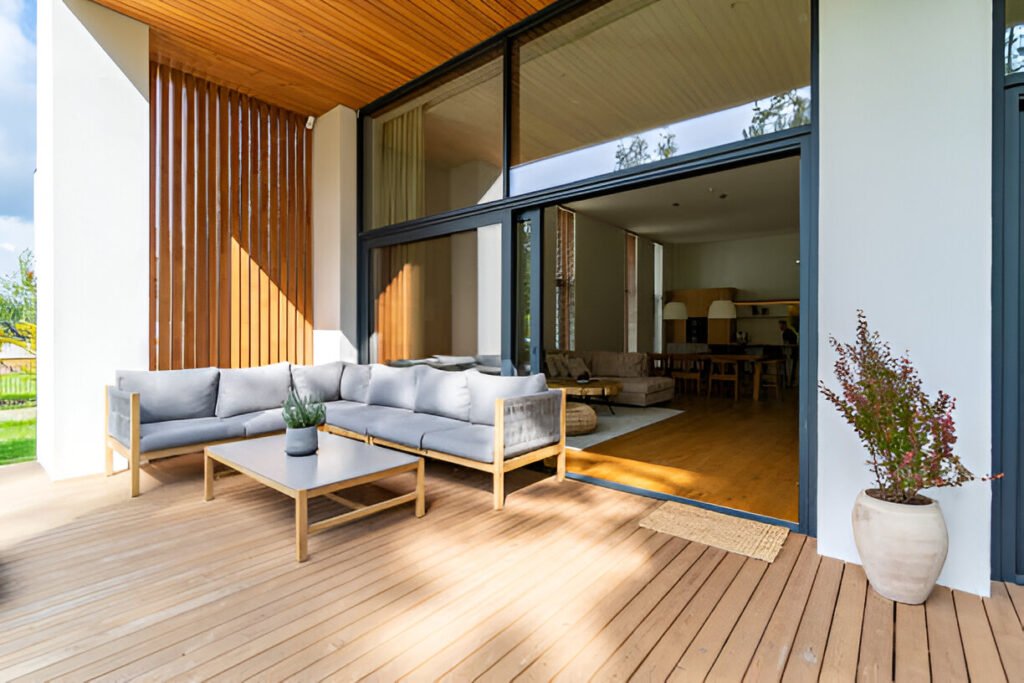Table of Contents:
- The Aesthetic and Financial Benefits of Decks
- Creating an Outdoor Living Space
- DIY vs. Professional Installation
- Choosing the Right Materials
- Maintenance Tips for Long-Lasting Decks
The Aesthetic and Financial Benefits of Decks
Adding a deck to your home can considerably boost curb appeal and market value. With a growing interest in outdoor living spaces, many homeowners opt for custom decks to enhance their homes. According to the Cost vs. Value Report, homeowners can recoup up to 75% of the deck’s cost upon selling their property. This makes it a sound investment both for enjoyment and future resale value. Decks offer a visually appealing space that seamlessly blends with your home’s architecture, creating a cohesive and attractive exterior. Furthermore, a well-designed deck can act as the focal point of your backyard, drawing attention to other landscaped features, such as gardens or pools.
Creating an Outdoor Living Space
A deck extends your indoor living space, offering a comfortable area for outdoor dining, entertaining, or simply relaxing. Many homeowners find their deck their favorite spot for morning coffee or evening gatherings with friends and family. Whether you’re hosting a barbecue or enjoying a quiet night under the stars, a deck provides a perfect setting for various activities. Moreover, it allows you to embrace the beauty of the outdoors without leaving the comfort of your home. From alfresco dining to sunbathing or even creating an outdoor office space, decks bring versatility to how homeowners use their outdoor areas. When decorated with outdoor furniture and potted plants, a deck can transform into a cozy and inviting retreat that mirrors the comfort of your indoor living area.
DIY vs. Professional Installation
While some seasoned DIY enthusiasts may opt to build their deck, many prefer the reliability of professional installation. Companies offer expertise, ensuring the deck is up to code and built to last. A professionally installed deck might come with a warranty, providing additional peace of mind. Professionals can often complete the job quicker and with higher-quality results than a DIY attempt. Take, for example, the required knowledge of local building codes and regulations, which a professional installer will be well-versed in. This ensures that your deck is aesthetically pleasing, structurally sound, and compliant with legal standards. Additionally, the professional touch means precise measurements and high-quality craftsmanship that might be challenging to achieve through a do-it-yourself approach, especially for complex designs or multi-level decks.
Choosing the Right Materials
When planning a deck, significant thought should be given to the materials. Options range from natural wood to composite materials. According to Better Homes & Gardens, composites are popular due to their low-maintenance needs and durability. Natural wood offers a classic and timeless look. Still, it may require more upkeep to maintain its appearance and integrity over time. Hardwood species, like cedar and redwood, are renowned for their resistance to rot and insects. Yet, they still necessitate regular staining and sealing. On the other hand, composite materials blend wood fibers with plastic, providing a more enduring and fade-resistant option that emulates the beauty of wood without extensive maintenance. Additionally, composites are environmentally friendly, often made from recycled materials, which appeals to eco-conscious homeowners.
Maintenance Tips for Long-Lasting Decks
Proper maintenance is key to ensuring your deck remains in excellent condition. Regular cleaning, sealing, and inspections can prevent damage and extend the life of your deck. For example, removing debris and power washing periodically can keep your deck looking new and prevent issues like mold and rot. Using high-quality sealants can protect the wood from moisture, UV rays, and other environmental factors. Inspect your deck for any signs of wear and tear, such as loose boards or nails, and address these issues promptly to avoid more significant damage. Seasonal maintenance can include reapplying protective coatings before winter and conducting a thorough clean-up after spring, ensuring that your deck remains in top shape year-round. Additionally, considering the placement of your deck furniture and using protective pads can minimize surface scratches and scuffs, enhancing the longevity and aesthetic of your outdoor living space.

















